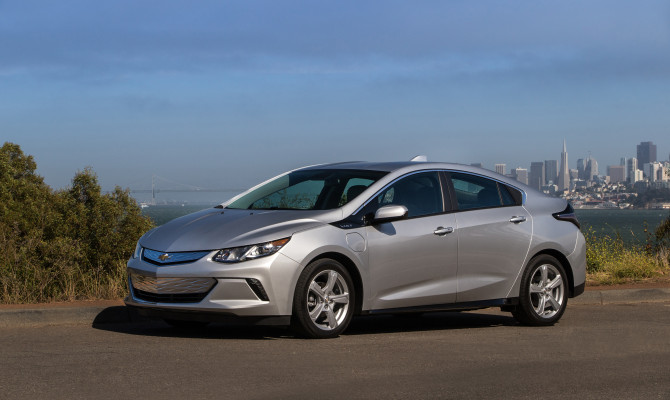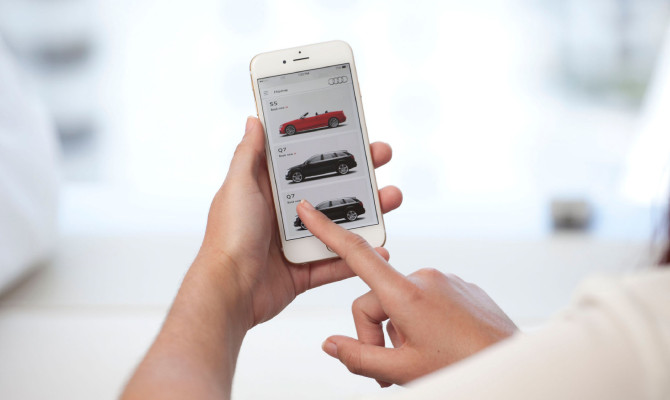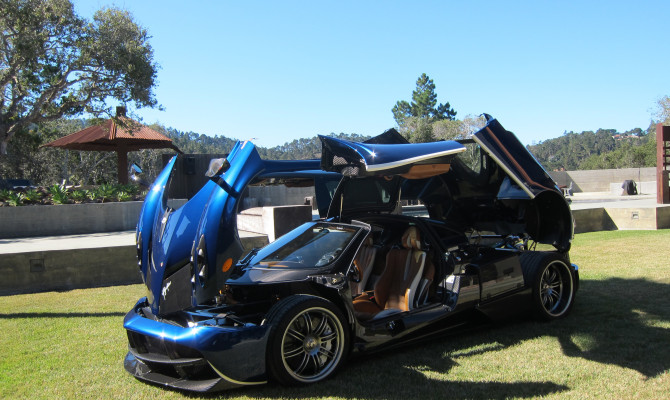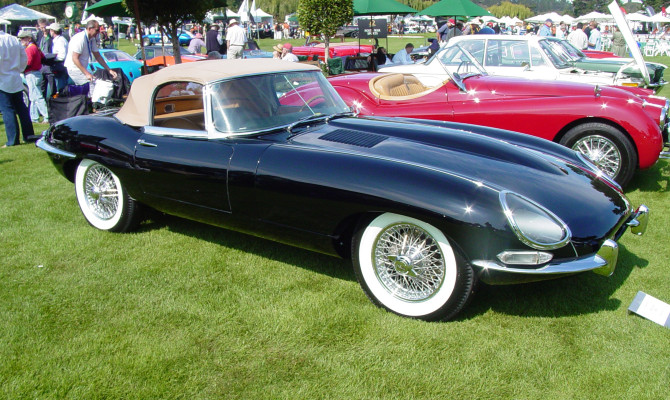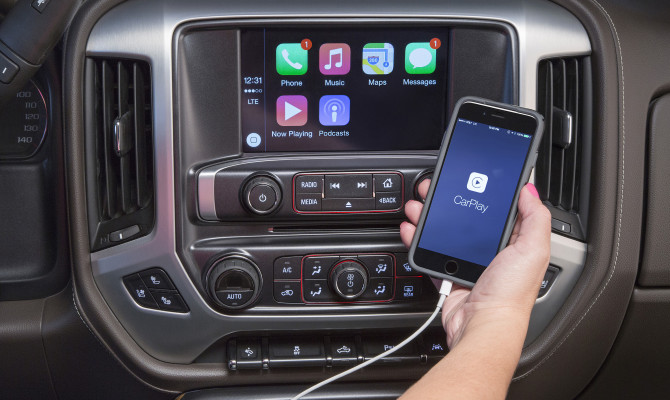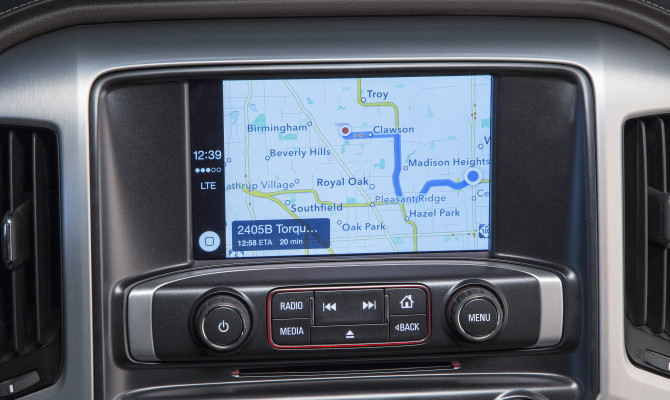“The all-new Volt delivers a total driving range of up to 675 kilometres.”
LOS ANGELES, California.
The new generation 2016 Chevrolet Volt has been awarded Green Car of the Year award from Green Car Journal at the Los Angeles Auto Show.
This is the second time the Volt has won the award, the first time being when it debuted in 2010 as a 2011 model. Green Car Journal praised the Volt’s increased range, all-new propulsion system and bold design.
“Chevrolet’s all-new Volt is a milestone, building on an already-technologically advanced ‘green’ car and delivering what buyers have longed for, including an impressive 53-mile (85 kms) driving range on a single charge,” said Ron Cogan, editor and publisher of Green Car Journal and CarsOfChange.com.
“A visually appealing design, increased five-passenger seating, and an array of on-board electronics combine with the Volt’s inherent efficiencies to make the 2016 Chevrolet Volt a real winner,” Cogan said.
The all-new Volt delivers a total driving range of up to 675 kilometres. Combined with EPA-estimated fuel economy of 5.6 L/100kms highway, Chevrolet expects owners to travel 1,600 kilometres between gasoline fill-ups.
“Chevrolet is all about bringing affordable electrification to our customers, and that is exactly what we did with the Volt” said Steve Majoros, Chevrolet marketing director. “For Volt to stand out in Green Car’s evaluation, it reaffirms Chevrolet’s commitment to being a leader in electrification.”
According to independent surveys, Volt owners are the most satisfied in the industry, and 70 percent of those owners are new to General Motors.
The Green Car of the Year award is determined by an 11-member panel, and is based on fuel efficiency, Environmental Protection Agency and California Air Resources Board certifications, performance and affordability. The other finalists were the Audi A3 e-tron, Honda Civic, Hyundai Sonata and Toyota Prius.
“This year’s edition of the show is not dazzling in terms of exciting new cars but it’s still La-La Land in presentation and the crazy customized cars are never disappointing…” (more…)
“Audi at home is offering a ready-to-drive fleets of six vehicles exclusively for residents of select luxury properties in two states.”
They’re taking ridesharing to a whole new level south of the border.
Audi at home is offering a ready-to-drive fleets of six vehicles exclusively for residents of select luxury properties in two states.
On the west coast, the car share scheme will operate at LUMINA by Tishman Speyer, San Francisco’s largest luxury condominium project currently under construction, while the Four Seasons Residences in Miami will offer the service on the east coast. The service will soon expand to other major U.S. cities.
Residents will be able to book a vehicle instantly and tailor their choice to the kind of driving they expect to do. The fleet currently includes the Audi S7, S5 Cabriolet, SQ5, TT Roadster, Q7, and RS5 Cabriolet.
“Spontaneity, personalization and customization is core to the Audi at home service,” said Mark Del Rosso Executive Vice President and Chief Operating Officer, Audi of America. “It provides residents a truly premium experience that suits their daily life and needs, whether it’s a car for a quick getaway out of the city or an extra vehicle for visiting guests.”
The reservation process is simple: interested residents register through the property’s concierge and use a mobile website to reserve the vehicle of their choice. Upon the conclusion of the reservation, residents simply return the Audi vehicle to the property valet.
All Audi at home vehicles are equipped with Prestige trim, and 24/7 live customer care is offered for drivers’ convenience. Rates – still to be announced – will be charged either hourly or daily. This rate covers services including cleaning, fuel, insurance, local tolls and unlimited mileage. All vehicles onsite are rotated on a regular basis, providing residents a fresh fleet from which to choose.
Another program may offer a clue to costs of participation. Audi on demand, started in San Francisco last April, giving customers within the city limits access to a wide range of vehicles, from the A4 sedan ($155 a day) to the Audi R8 supercar ($1,195 a day). Via an iPhone app, customers select their preferred model and then have it personally delivered to them at the San Francisco location of their choice.
VIDEO: Audi R8 – evo Review
“Pagani Huayra – all new 2016, powered by a 720-horsepower twin turbo, the fastest car to go around the Top Gear test track will dazzle.”
The Luxury & Supercar Weekend unfolds for the sixth year on the Great Lawn of the VanDusen Botanical Garden this weekend.
The park will again provide the perfect backdrop for a fashionable garden party atmosphere with Canada’s largest display of fine jewelry, luxury hospitality tents, alongside pop-up restaurants, and wine and cocktails provided by some of Vancouver’s best restaurants and bars.
Some of the new and private highlighted vehicles invited for display include:
A Pagani Huayra – all new 2016, powered by a 720-horsepower twin turbo, the fastest car to go around the Top Gear test track will dazzle.
A LaFerrari – boasting the most extreme performance ever achieved by a Ferrari production car, a Lamborghini Huracán, Lamborghini Trofeo track car, McLaren P1 and a McLaren 675LT.
A Magnum Mk5 – The first creation from Canada to hit the international track-day car market and a Felino cB7 – A street legal track car.
Classic collectable cars include a superbly curated collection of Ford Thunderbirds. They will be joined by a 1912 Rolls-Royce Ghost – the second oldest Rolls-Royce in Canada – a 1937 Rolls-Royce 25/30 Drop Head Coupe named “Buttercup and an extremely rare Honda 1300 Coupe 7 – plus a BMW Isetta – The little car that saved BMW.
The featured nine Concours d’Élégance classes will be: Rolls-Royce, European Sports Cars, British Invasion – 50th Anniversary of MGA, Jaguar E-type, Ford Thunderbirds – 60th Anniversary, Microcars, Pre-War American Classics – open and closed pre 1942, Pre-War European Classics – open and closed until 1942, 1940 Fords – featured class for 2015 – 75th anniversary, Japanese Collectables – the next generation of collector cars.
A fashion show pavilion showcasing a total of six fashion shows throughout the weekend. Three shows will occur each day at the following times: 1p.m. (Boho Beauty), 2 p.m. (Trending Tones) and 3 p.m. (Playful Patterns).
VAULT in the Gardens, a luxury jewelry pop up gallery, will host two major collections featuring vintage collection from iconic brands as well as handmade jewellery.
More than 100 luxury retailers including automotive, music, art, gourmet food suppliers, top Vancouver restaurants, champagne, wine and spirits companies, will show their wares and demonstrate their services.
The show runs from 11 a.m. until 5 p.m., Saturday and Sunday. Advanced tickets are now on sale online at www.luxurysupercar.com. Tickets can also be purchased on site. General admission is $50 for each day. VIP admission (19+) is $100 – includes food and alcoholic beverage. Tickets for children under 12 are $25 and children under the age of two will receive free admission.
Contact the writer at keith [dot] morgan [at] drivewaybc [dot] ca
“The features allow customers to use select smartphone apps through the touchscreen interface of GMC’s IntelliLink system.”
GMC is adding Apple CarPlay capability to the 2016 Canyon, Yukon and Sierra, taking the iPhone features customers want to access while driving and putting them on the vehicle’s display in a smart, simple manner with the brand’s IntelliLink system.
Android Auto capability will also be offered on some Sierra models at the beginning of the model year and all Sierra, Canyon and Yukon models later in the year.
The features allow customers to use select smartphone apps through the touchscreen interface of GMC’s IntelliLink system. Many features can be controlled via voice commands through a button on the steering wheel, helping drivers keep their eyes on the road and hands on the wheel.
“GMC IntelliLink is taking another step forward with this simple and intuitive functionality that makes phones and vehicles work better together,” said Duncan Aldred, vice president of GMC Sales and Marketing. “Like other GMC features, from OnStar 4G LTE connectivity and active safety features, it’s technology designed to enhance the driving experience without intruding on it.”
See: The GMC Canyon – Have A Mind For Adventure (GM.ca)
GMC’s latest infotainment systems include an eight-inch-diagonal screen version offered on Canyon, Yukon and Sierra, which will be compatible only with Apple CarPlay at the beginning of the 2016 model year. A seven-inch-diagonal screen radio is offered on Sierra base models and will offer Apple CarPlay and Android Auto capability at the beginning of the model year. Android Auto capability is expected to be available on the eight-inch system later in the 2016 model year.
Apple CarPlay takes the iPhone features customers want to access while driving and puts them on the vehicle’s display in a smart, simple manner. This allows drivers to make calls, send and receive messages and listen to music right from the touchscreen or by voice via Siri. Apple CarPlay-supported apps include Phone, Messages, Maps, Music and third-party audio apps.
Android Auto is built around Google Maps, Google Now and the ability to talk to Google, as well as a growing audio and messaging app ecosystem that includes WhatsApp, Skype, Google Play Music, Spotify and podcast players.
Using either application is simple. A “Projection” icon on the IntelliLink screen is visible when a phone is not connected, then changes to indicate CarPlay or Android Auto when a compatible phone is connected via USB.
“The deep learning process is at the centre of a drive to produce a commercially available vehicle that can pilot itself to any destination with little human help.”
As Audi perfects its autonomous driving technology, it’s using ‘deep learning’ to train computers to imitate the human brain.
This breakthrough played a critical role for a recent 885-kilometre autonomous-drive of “Jack,” the Audi A7 Sedan from Silicon Valley to Las Vegas. The deep learning process is at the centre of a drive to produce a commercially available vehicle that can pilot itself to any destination with little human help. Audi is cooperating with such key suppliers as NVIDIA, the digital-tech company based in Santa Clara, California, to create a vehicle computer the way human brains process new information.
To understand the concept, think of the car’s way of learning as being similar to that of child. Caregivers teach a baby to identify things perceived with senses: a circle, a square, colors. Object edges are very important in this process. The edges form meaningful, distinct shapes, which the brain starts to recognize. A fire truck is red, has a certain shape and wheels, but at first, the baby might think all trucks are fire engines. Then the child learns to differentiate between different kinds of trucks.
The car technology enables pixels to be generated by camera images, in a similar way to how the human eyeball transfers images to the brain. The Audi processor, about the size of a tablet PC and powered by NVIDIA’s Tegra processor, analyzes every frame of video that comes in, and it senses edges which it groups into shapes. It learns that the shapes are objects then learns to differentiate those objects.
This artificial intelligence enables the Audi processor to detect, for instance, features such as eyes, a nose and mouth, and it figures out that they all fit into a face. It also allows vehicles to detect and identify other vehicles. All of this information goes into a database to foster future advances in such recognition. The system serves as one of the important bases of intelligence for piloted driving.
With every kilometre travelled, the car gets smarter. But it takes more than terabytes of such data to make for successful autonomous driving. The data has to be processed very quickly: 30 video frames a second. The information must be transmitted, recognized, processed, analyzed – and provide a reaction – almost instantaneously, in case a driver is encountering dangerous conditions.
That’s why one of the most important objectives of deep learning is to ensure that every bit of object recognition is embedded in the processor in the vehicle itself and is not dependent on the internet cloud.
Of course, we hope Audi will not incorporate some driver thought processes into this deep learning technique!
(Story features files from Newspress.)
Contact the writer at keith [dot] morgan [at] drivewaybc [dot] ca
Public speaking just lost the top spot as the most feared task for the young generation.
Distracted, dangerous drivers are now their first concern, new research funded by Ford finds.
Generation Z consumers are more afraid of other motorists driving dangerously than death, public speaking, spiders and snakes, according to independent research company Penn Schoen Berland.
Top fears for Millennials and members of Generation Z:
- Other motorists driving dangerously (88 per cent)
- Public speaking (75 per cent)
- Death (74 per cent)
- Spiders (69 per cent)
- Snakes (69 per cent)
“Younger generations are growing up with different fears than their parents or grandparents,” said Kevin Shkolnik, vice president, Penn Schoen Berland. “Younger drivers are worried about distracted drivers, but they think technology isn’t just the problem, it’s also the solution, as we are seeing growing demand for driver-assistance technologies.”
The most worrisome driving situations among survey respondents include:
- Snowy or icy roads (79 per cent)
- Manoeuvring into a tight parking spot (75 per cent)
- Backing out onto a busy street (74 per cent)
- Monitoring blind spots (70 per cent)
- Not knowing where I’m going (69 per cent)
Penn Schoen Berland conducted the poll on behalf of Ford Motor Company, surveying 1,000, Generation Z (ages 16-22) and Generation Y (ages 23-34). The online survey was conducted between April 29 and May 4, 2015; the margin of error is +/- 3.1 per cent.
Ford says the new research validates its decision to offer technologies that will help drivers with common driving concerns. Ford has now announced it will migrate driver-assist technologies across its product lineup over the next five years.
“Research like this is important to Ford and other automotive brands because it informs us about the situations that cause consumers the most stress,” said Crystal Worthem, Ford brand marketing manager. “As driver distraction and safety conversations have broadened, we are seeing what technology will help customers tackle their greatest fears.”
The research shows 65 percent of respondents are more likely to purchase a vehicle if it has technology to help with parallel parking. Of those polled, 62 per cent want technology to detect objects in blind spots.
Contact the writer at keith [dot] morgan [at] drivewaybc [dot] ca
“The incentives are expected to reduce greenhouse gas emissions by the equivalent of taking 1,400 cars off the road…”
(more…)
“The 2015 Acura RLX Sport Hybrid SH-AWD would be my personal “primo-green” pick, if I were lucky enough to have a spare $50K stashed away…”
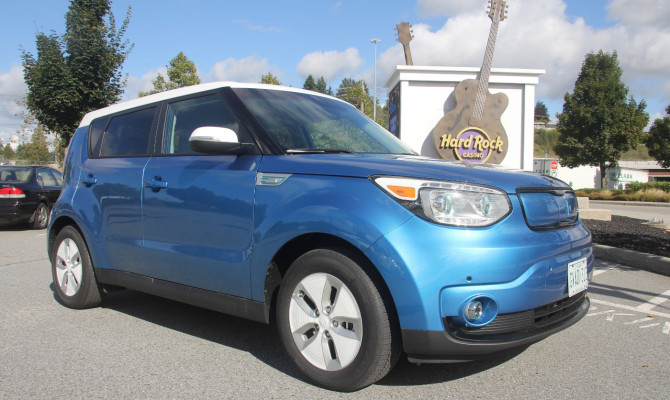
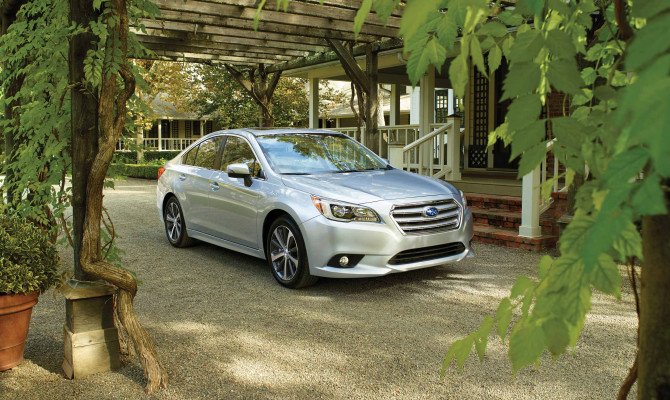
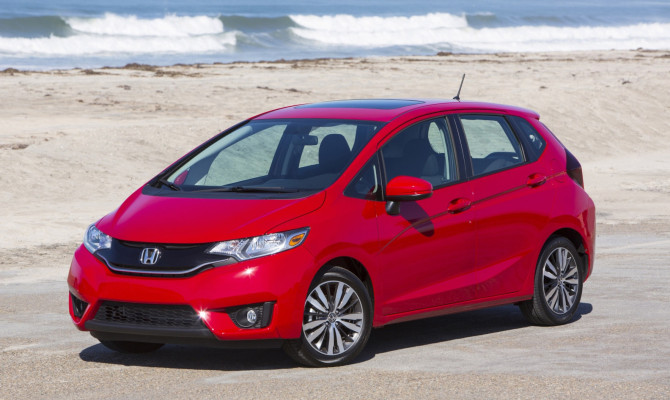
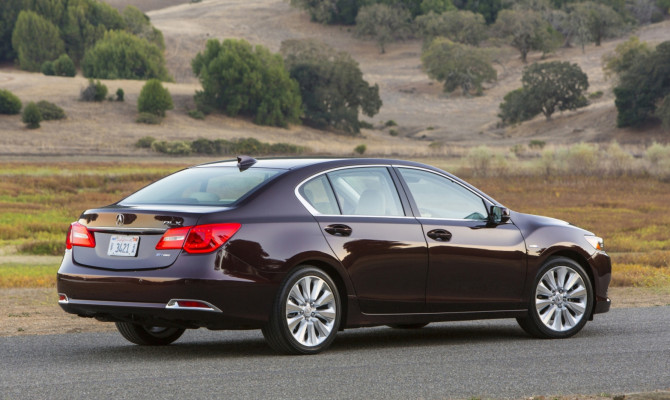
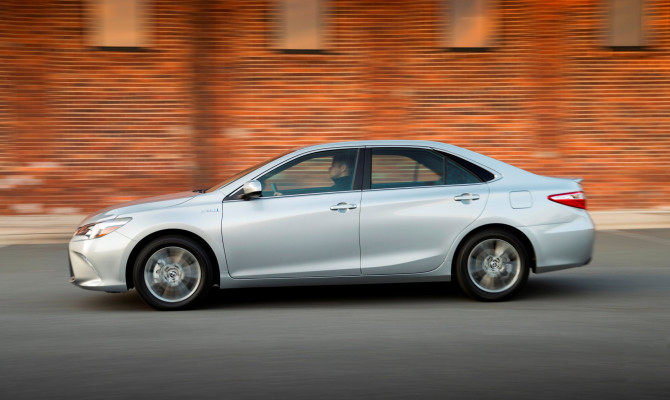
Good news for B.C. auto buyers who want a “green car” – a $7.5 million fund was set aside in Victoria’s provincial budget, in order to bring back a government incentive program that offered point of sale rebates to buyers of plug-in hybrids, electric vehicles and fuel cell vehicles.
The previous rebate plan expired last spring and details of the new plan are expected to be announced at the Vancouver auto show.
Here are five new-to-market vehicle choices with “green” aspirations. The first four are finalists for the AJAC Green Car of the Year Award, which will also be announced in Vancouver at the auto show next week.
The 2015 Acura RLX Sport Hybrid SH-AWD would be my personal “primo-green” pick, if I were lucky enough to have a spare $50K stashed away.
2015 Honda Fit
Honda Fit may be small on the outside, but its organic shape and an ingeniously versatile seating system makes the most of every bit of interior space. The new Fit also consumes even less fuel, due to a new powertrain and a lighter yet more rigid new body.
A 1.5-litre engine that can produce 130 horsepower and 114 lb-ft of torque, powers all Fit models. Fuel economy is rated at 7.0/5.7/6.4 L/100km (city/highway/combined) with the new Continuously Variable Transmission (CVT).
Members of the Automobile Journalists Association of Canada (AJAC) have already voted Best New (2015) Small Car (under $21,000) the Honda Fit.
2015 Kia Soul EV
This is a clever electric vehicle adaptation of Kia’s tall 5-door compact car with the funky styling. Soul EV offers the same, user-friendly features as its gasoline counterpart, with seating for four or five and a large rear cargo area. Kia’s polymer (electrolyte) lithium-ion battery pack is compact and easier to hide, as is can be molded into different shapes. In Soul EV it’s centrally fitted under the rear seats and a raised rear floor pan.
The liquid-cooled AC synchronous permanent magnet electric motor can generate a whopping 210 lb-ft of torque. That’s 59 lb-ft more than the gas engine version of Soul. Yet, its impressively smooth and standing starts are not as jumpy as other electric vehicles. Soul EV has a claimed driving range of 149 km on a single charge.
2015 Subaru Legacy
The redesigned Subaru Legacy won the overall 2015 Canadian Car of the Year Award. A substantial improvement in fuel economy was achieved through a variety of engineering initiatives that included an impressive new (Lineartronic CVT) automatic transmission. It’s also the only car in the “family car” market segment that comes with standard all-wheel-drive.
Legacy was engineered in Japan and is built in the USA in an award winning production facility, for environmental excellence, in Indiana. In fact, the entire 832-acre plant site is designated a Backyard Wildlife Habitat by the National Wildlife Federation.
2015 Toyota Camry Hybrid
Toyota has rebuilt the 2015 Toyota Camry from the ground up. It’s a sportier, better handling Camry with a striking new design and a passenger cabin that Toyota claim is the quietest-ever. The Hybrid editions come in three model grades and a starting price of just $28,710.
Camry Hybrid is powered by a 2.5-litre four-cylinder Atkinson Cycle engine linked with Hybrid Synergy drive and matched to an E-CVT. Fuel economy is rated at an amazing 5.7 L/100km (which is about 50 mpg) in the city and 6.0 L/100km on the highway.
2015 Acura RLX Sport Hybrid SH-AWD
Acura has linked its superb electronic (torque vectoring) Super Handling All-Wheel Drive (SH-AWD) system with a new hybrid powertrain in this all-new version of the RLX. The gas engine is a 3.5-litre V6 with Variable Cylinder Management and it’s linked to a seven-speed dual-clutch transmission.
This is the most powerful Acura production sedan ever built and has a claimed combined (gas + electric) peak output of 377 horsepower. Yet, its fuel consumption is a miserly 8.0/ 7.5 L/100km (city/highway). A little pricey (starts at $49,990), but amazing!
“My biggest fear is that someone I love will be in a horrific, life-changing, potentially fatal car accident.”
by Lauren Kramer
**********
My kids have my permission to yell at their dad whenever they spot him using his cell phone while driving.
Which, unfortunately, is often. I’ve coached them on what to say: “You’re putting my safety at risk,” “You’re breaking the law,” and “Dad, put your phone away this minute!”
I’m not alone when I say my biggest fear is that someone I love will be in a horrific, life-changing, potentially fatal car accident. And every time a driver picks up their phone while operating a car, that accident becomes increasingly likely.
We’re all doing it, but we know we shouldn’t.
Sneaking peeks at our cell phones while we’re driving has become an irresistible temptation as more and more of us become addicted to checking email, responding to texts and answering calls whenever they come in – and no matter what is going on around us.
It’s easy to rationalize. “This will just take a second,” we think, exaggerating the amount of time it takes to, say, respond to a text message. According to the Canadian Automobile Association the average distraction time for this task is 22.6 seconds, the distance of 373 metres of travel at 40 km/h and the equivalent of four intersections or 68 parked cars.
But it’s not just the texting time that’s so perilous, it’s the time it will take you to regain your focus on the road, to bring your car to a standstill if you have to. Perception, reaction and braking time after a distraction like this – even something as minor as hitting two letters to type “OK” – is 25 metres, the equivalent of a lineup of 17 people.
That’s a long time when you’re controlling a powerful, hunk of metal like a car.
The truth is that cell phones have become every much as dangerous an addiction when driving as inebriation – even more so because they lack the ugly stigma associated with drunk driving. Yet the probability of being in a crash while you are distracted is horrifying. Texting, even just a word? You are 23 times more likely to crash. Talking on your cell phone – four-to-five times more likely. And reading that ‘urgent’ email that simply couldn’t wait makes you three times more likely to be in a potentially fatal accident, according to research by CAA.
Findings by ICBC show that distracted driving is the second leading contributing factor of vehicle fatalities in BC. That’s why, October 20, new penalties for distracted drivers were implemented in this province. If you are caught with your cell phone in hand or programming your GPS while driving, you’ll get a $167 fine and a deduction of three penalty points. It’s a rap on the knuckles but also a reminder to fight our addiction to electronic devices while we’re driving.
Because the fact is, for even the best drivers, it’s impossible to safely split your attention while you’re driving. Don’t be fooled if you’ve been lucky thus far, because driving while distracted and not crashing or causing an accident has more to do with luck than competence. And seriously, why wait for luck to run out?
Overcoming that cell phone addiction on the road is as easy as turning off your phone and putting it in the glove box or trunk of your car, where you absolutely cannot reach it while you are driving. That’s what instructors at Mercedes Benz Driving Academy insist their students do when they step into a car. Yes, I know, you are expecting an important call so you don’t want your phone off. In that case, Bluetooth or wired headsets (worn only in one ear unless you are on a motorbike) are the next best thing.
But the key is to make sure your phone is out of reach, because when it is within stretching distance, it’s a pinging candy bar most of us can’t refuse.
Contact: laurenkramer [at] shaw [dot] ca
Recent Comments
- { Enjoyed your Forest of Bowland in the BMW X5M, particularly the photo of the BMW in front of the main part of Stonyhurst College where... }
- { Bantam designed the Jeep, not Willy's or Ford. The American military gave the original Bantam prototype to Willys and Ford to copy. There is plenty... }
- { All Escalades come with a 6.2-lilter V8 engine that produces 420 horsepower. A six-speed automatic is the only transmission offered and drives the rear wheels.... }
- { Alexandra is an excellent journalist. }
Popular Posts
- Journey to a ‘Sparkling’ Luxury Okanagan Resort “Four lucky readers will put a Dodge Journey’s weekend-...
- The Need For Speed: Hike Those Highway Limits More than half of those polled believe the province sho...
- Drives-U-Crazy… Erratic drivers. An early morning drive from Kelowna to Vancouver is nor...
- Readers Respond: The Pros and Cons of Increasing B.C. Speed Limits Increasing the speed limits will only increase risk to...
- Honda CR-V Review: The Compact Crossover To Get Things Done The CRV is a very stylish and aerodynamic crossover veh...


